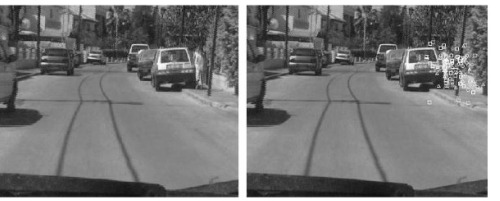An Israeli research team finds that older drivers are more sensitive to potential hazards, while younger drivers tend to focus only on the road ahead.

The current assumption is that older people make poor drivers and that past their prime, drivers’ skills steadily diminish. But a new study published at Israel’s Ben Gurion University (BGU) finds that a driver’s ability to detect hazards does not degrade significantly with age, and that older drivers are more sensitive to potential hazards than young and inexperienced drivers.
Authored by BGU PhD student Avinoam Borowsky and his supervisors from the Human Factors Safety Laboratory, the research suggests that older experienced drivers (those who have been on the road for an average of 37 years), and drivers with some experience, pay more attention to risky road situations, like an upcoming T junction intersection or pedestrians on a curb, than their more youthful inexperienced counterparts do. Insurance companies and driving schools should be interested in the findings.
The researchers hooked up their subjects to eye-tracking software and a computer screen. They worked with three study groups: 21 young and inexperienced drivers, 19 experienced drivers, and 16 older drivers with an average of 37 years of driving experience. The tracking system analyzed how the drivers assessed risks as they watched a computer screen. They were asked to press a button when a risk was perceived.
Hazard perception remains intact
“We found that with older drivers, in general, their hazard perception abilities remained intact,” Borowsky tells ISRAEL21c. “However, they relied heavily on signs and signals, such as signals from other vehicles, to cope with the traffic environment.
“In their verbal comments, however, older drivers tended to claim that the other road users were responsible for putting them at risk and rarely considered themselves as responsible for hazardous events,” he adds. The study is to be published in the July issue of the journal Accident Analysis & Prevention.
As part of the study, the drivers were presented with four films representing very hazardous situations on the road. Two additional films that did not portray road hazards were also screened.
Based on the simulator results, the researchers found that the experienced drivers, including the older experienced group, scored just as well on hazard detection on the road, while the younger, inexperienced drivers stopped reporting hazardous situations. Younger drivers, the researchers observed, tended to fixate straight ahead, and therefore paid less attention to other vehicles that might be merging from the sides.
“This is an ongoing project at the university,” Borowsky tells ISRAEL21c. “And the research is part of my Masters thesis which then transitioned into my PhD. We examined six short video clips and when watching them, the people had to press a button each time they detected a hazard. Older drivers seem to detect hazards the same as experienced drivers. What is important to say here is that the movies we examined were limited and we didn’t check how they cope with the hazard.
“But when detecting hazards – at this the older and experienced drivers were better than younger drivers. Our conclusion is that older drivers do appear to rely on signaling from other vehicles because they may be aware of their age-related limitations,” he continues.
Also, while those in the experienced and inexperienced driving groups sometimes assumed blame in the various driving scenarios, the older drivers did not, Borowsky reports.
Aiming for fewer accidents
While he is not conducting his research for insurance companies, the project is part of Borowsky’s investigation into a new driving school tool that aims to improve the driving skills of the next generation of drivers.
This particular study focused on age and gives Borowsky clues about the ‘perception’ skills of young versus older drivers. “We know that older drivers have difficulties related to their age. But what the research showed is that the limitations are not due to perception problems. Older drivers might have more accidents on the road due to their ability to react or problems with peripheral vision,” Borowsky suggests.
Among the tools available at the lab where Borowsky conducted his research are a state of the art driving simulator, a large panoramic screen, and a fairly cushy 2008 Cadillac Sedan, donated to the lab by General Motors. Working with GM for more than 10 years, the BGU Human Factors Engineering lab is exploring new ways to engineer vehicles so that there will be fewer accidents on the road.
As a resident of the car accident-prone country of Israel, Borowsky knows the dangers of the road only too well. He’s hoping that his research and the tool that he’s developing will educate better drivers and save lives, everywhere.












